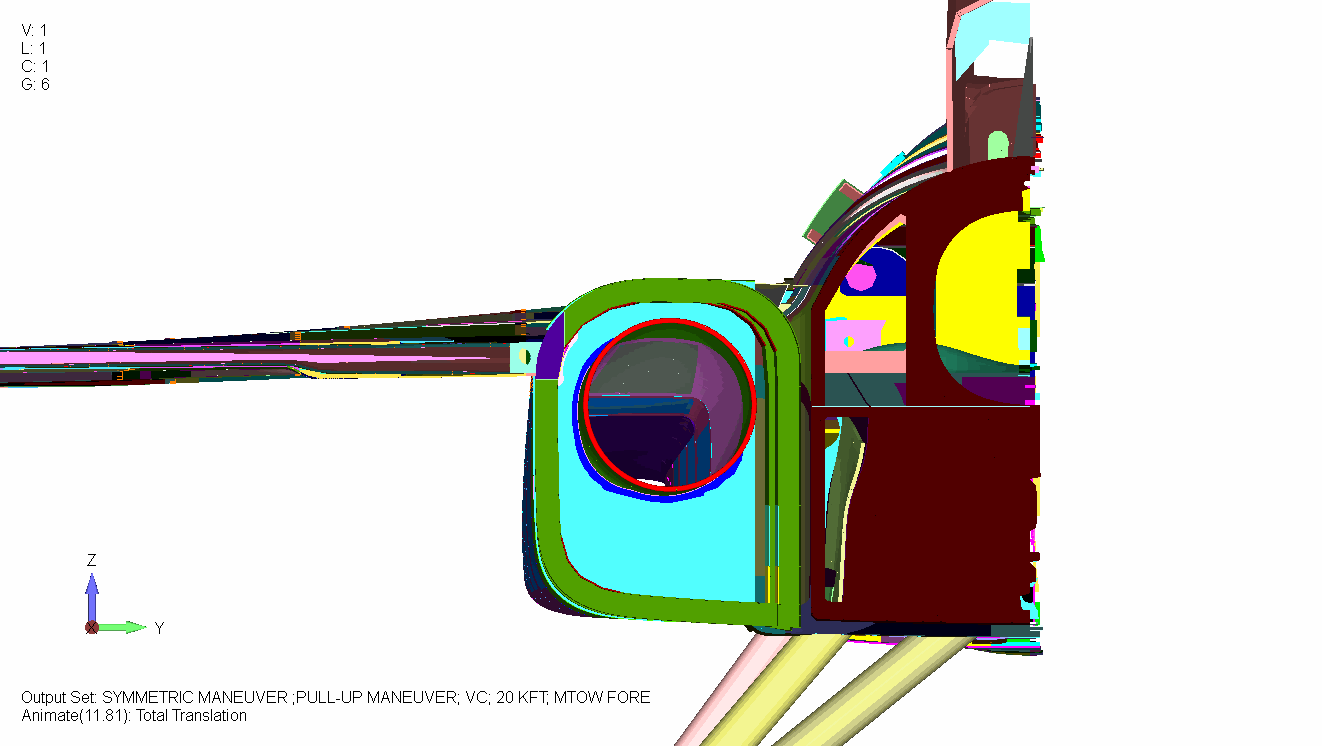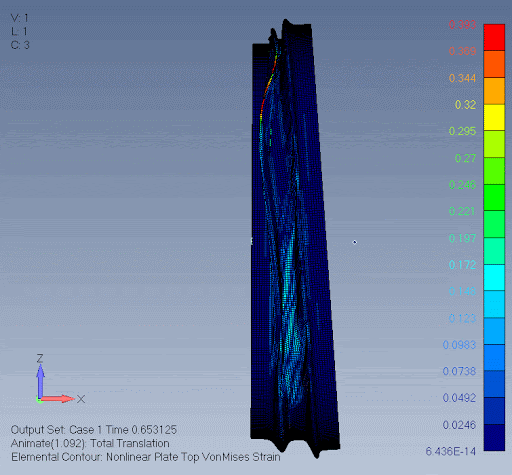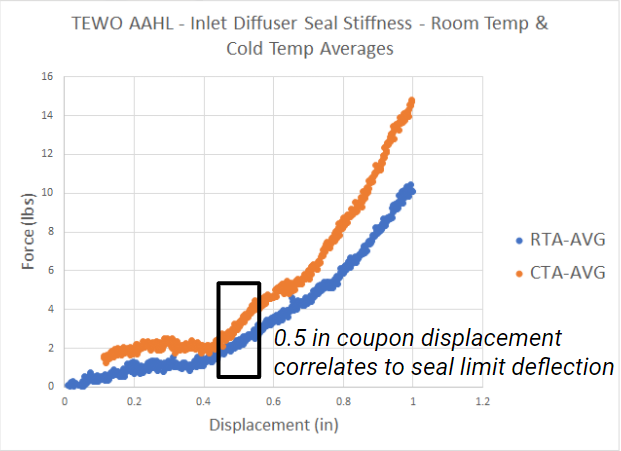
Engine Diffuser Seal
Flight critical component for XB-1 that directs flow from the inlet duct to engine face in a harsh operating environment
S K I L L S D E M O N S T R A T E D:
Composite Material R&D
Silicone Design
Nonlinear FEM Analysis
Leadership
Mold Design
M&P Coupon Testing
Test Fixture Design, Test Execution
LabView Data Acquisition
Requirements
High Deflection.
Must take up 0.3 in of engine growth and 0.5 in of radial structural deflection.
Low Stiffness.
The seal shall impart a maximum of 60 lb on the engine face.
Durable at Cold Temperatures.
The seal must withstand 1000 cycles at -40 deg F.
Ownership Through the Full Design Cycle
Design.
Developed a custom high-performance material and seal shape for the engine diffuser seal on XB-1. We were unable to repurpose the T-38 or F-5 engine-diffuser seals because our structural deflections are much higher . As a result, we designed a custom bellows-type seal made of silicone impregnated fiberglass. The fiberglass is delicately laid-up on a 3D printed tool and an outer mold is fastened on to remove porosity and increase seal durability. This proprietary seal meets all requirements while being light and durable.
Analyze.
Conducted nonlinear analysis to optimize seal profile. Analyzed seal to an enveloping set of load cases. Applied material properties to the model based on silicone coupon testing that required custom designed cutting dies and new allowable generation methods.
Test.
Executed testing for each of the 11 seal iterations. Test results were vital to informing the next seal design iteration. Tested for maximum pressure capability of the seal, leak rate of the seal, and force exerted by the seal under deflection. I designed the purpose-driven test fixture and LabView program that could apply pressure to the seal, actuate the seal side to side, and record leak rate, forces, and maximum pressure at failure.
The best design takes…
I T E R A T I O N






Radial displacement testing for seal iteration 1
Capturing Temperature Effects
Elastomers such as silicone suffer from compression set and increased stiffness at low temperatures.
The composite material used for the seal was developed in house, so no existing data is available. I developed temperature knockdowns from coupon data. The coupon shown to the right is testing shear buckling properties of the silicone impregnated fiberglass coupon.
Chart compares cold temperature (orange) and room temperature (blue) data to develop shear buckling temperature knockdown
Scrappy Material Properties Testing for Engine Diffuser Seal






